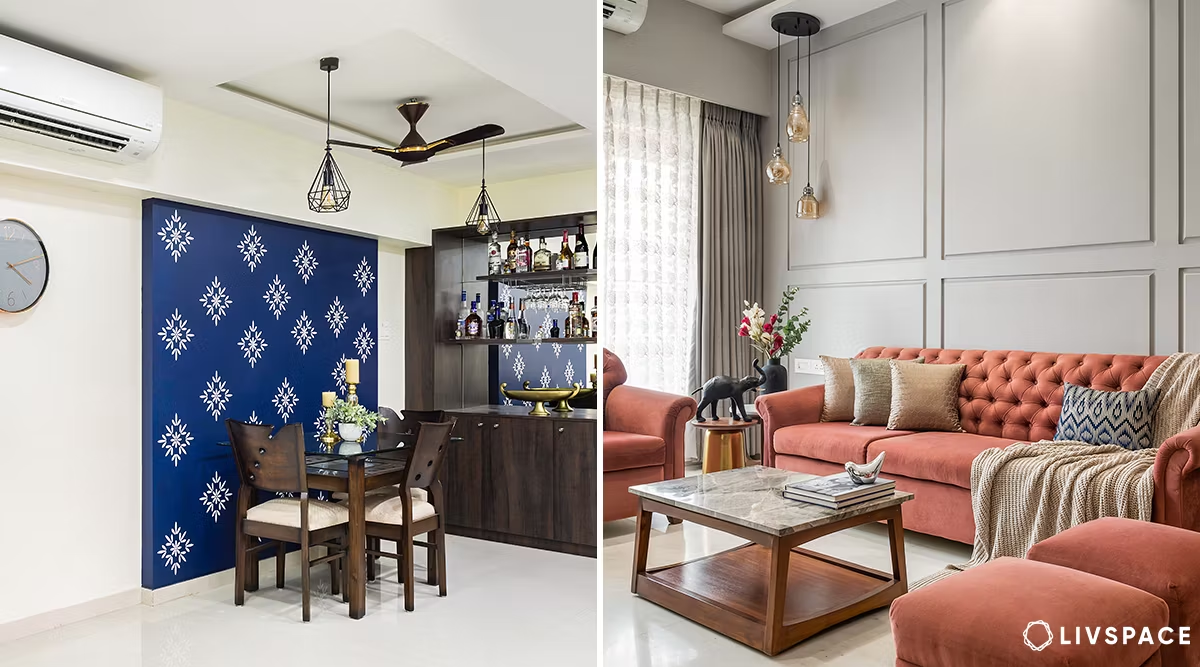Exploring Modern Wall Design Trends for Homes and Offices in the USA
Walls are more than just boundaries—they are an integral part of interior design that can transform a space from ordinary to extraordinary. In both homes and offices across the USA, wall design trends are evolving, embracing everything from aesthetic appeal to functionality. Here’s a guide to some of the most popular wall design types currently shaping interiors.
Accent Walls
Residential: Accent walls are a versatile design element in homes, offering a splash of personality or a focal point in a room. Homeowners often use bold colors, wallpapers, or textured materials to make one wall stand out. Popular choices include deep hues like navy blue or emerald green, and materials like reclaimed wood or stone.
Commercial: In office settings, accent walls can reinforce branding or create visual interest in conference rooms and reception areas. Companies might opt for their corporate colors, branded graphics, or sleek materials such as glass or metal to make a statement.
Feature Walls
Residential: Feature walls extend beyond simple accents by integrating functional elements. These can include built-in shelving, entertainment units, or feature fireplaces. They often serve as central points in living rooms or dining areas, combining both utility and design.
Commercial: In offices, feature walls might include display areas for company achievements, interactive screens, or collaborative whiteboards. These walls not only enhance the office environment but also facilitate productivity and communication.
Gallery Walls
Residential: Gallery walls are a popular choice for homes, allowing for a personalized display of artwork, photographs, and other decorative pieces. This approach is especially favored in living rooms, hallways, and home offices, where it can create a unique and engaging visual narrative.
Commercial: In workplaces, gallery walls can showcase company history, employee achievements, or art collections. They add character to office corridors and common areas, making the environment more inviting and engaging.
Textured Walls
Residential: Textured walls, such as those featuring plaster, stucco, or 3D wall panels, add depth and dimension to interiors. Textures can range from subtle to dramatic, and they are often used to create a sophisticated backdrop in living rooms, dining areas, and even bedrooms.
Commercial: In office spaces, textured walls can enhance acoustics and add a modern touch. Materials like acoustic panels or high-quality wallpapers with embossed designs are commonly used in meeting rooms and reception areas to blend aesthetics with functionality.
Glass Walls
Residential: Glass walls are used in homes to create open, airy spaces while maintaining separation between areas. They are often employed in modern homes to divide living spaces or to create elegant partitions in areas like home offices or bathrooms.
Commercial: Glass walls are a staple in contemporary office design, providing transparency and fostering a sense of openness. They are frequently used in conference rooms, private offices, and lobby areas to enhance natural light and promote a collaborative atmosphere.
Wallpapered Walls
Residential: Wallpaper has seen a resurgence in popularity, thanks to advancements in design and technology. From classic patterns to bold graphics, wallpaper can transform any room. In residential settings, it’s often used in bedrooms, living rooms, and even kitchens to add texture and style.
Commercial: Wallpaper in office environments tends to lean towards more subtle or professional designs. Textured or patterned wallpaper can help define workspaces or create branded environments without overwhelming the senses.
Green Walls
Residential: Green walls, also known as living walls, are an eco-friendly option that integrates plant life into the home environment. They can improve air quality and add a touch of nature indoors, making them popular in modern homes and apartments.
Commercial: In offices, green walls contribute to well-being and productivity by enhancing air quality and providing a calming effect. They are often seen in lobbies, wellness rooms, or even as part of a company’s sustainability initiatives.
Partition Walls
Residential: Partition walls are used to define spaces within a home without the need for full-height walls. They are ideal for creating separate areas in open-plan homes, such as dividing a large living area from a dining space.
Commercial: In office environments, partition walls are crucial for creating flexible workspaces. Modular partitions can easily be reconfigured to adapt to changing needs, making them a practical choice for dynamic office layouts.
Conclusion
The variety of wall design options available today allows homeowners and office managers to tailor their spaces to meet both aesthetic and functional needs. Whether through the use of bold accent walls, sophisticated textures, or innovative glass partitions, modern wall designs are an integral part of creating environments that are both visually appealing and practical. As trends continue to evolve, keeping an eye on these developments can help ensure that your walls are as dynamic and versatile as the spaces they define.
